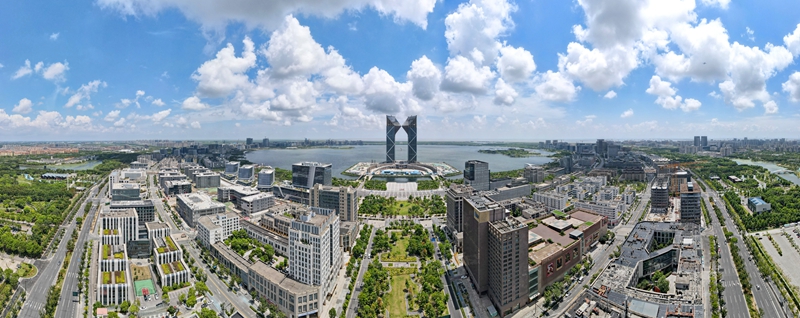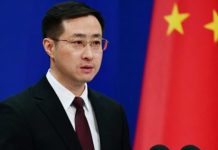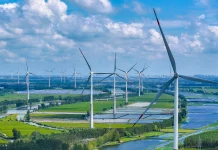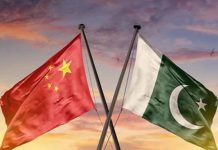
On the morning of November 1, President Xi Jinping attended the Asia-Pacific Economic Cooperation (APEC) chairmanship handover session of the 32nd APEC Economic Leaders’ Meeting in Gyeongju, the Republic of Korea (ROK), where he announced that China will host the 33rd APEC Economic Leaders’ Meeting in Shenzhen, Guangdong Province.
Xi said he looks forward to all parties gathering in Shenzhen next year to jointly discuss the development plans for the Asia-Pacific region and to create a bright future for it.
The selection of Shenzhen to host the APEC Economic Leaders’ Meeting 2026 holds great significance. Shenzhen’s transformation from a small, backward fishing village into a modern international metropolis over the recent decades is described by Xi as a miracle in the history of world development created by the Chinese people. In this process, the city has become an important window into China’s unswerving pursuit of a mutually beneficial and win-win opening-up strategy.
Amid rising protectionism, Xi sent a clear message at this year’s APEC Economic Leaders’ Meeting, held on October 31 and November 1, that China will open its door wider and create new opportunities for the Asia-Pacific and the world at large.
The meeting was the first multilateral event attended by Xi following the Fourth Plenary Session of the 20th Central Committee of the Communist Party of China (CPC), which was convened in Beijing from October 20 to 23. That plenary session laid out the CPC Central Committee’s recommendations for formulating the country’s 15th Five-Year Plan (2026-30), outlining priorities for national economic and social development over the next five years.
The document calls for efforts to promote broader international economic flows, expand opening up at the institutional level, safeguard the multilateral trading system and pursue high-quality Belt and Road cooperation. The China-proposed Belt and Road Initiative aims to boost connectivity along and beyond the ancient Silk Road routes.

Visitors browse the smart medical zone at the 138th China Import and Export Fair (Canton Fair) in Guangzhou, Guangdong Province, on October 31 (XINHUA)
Adhering to open cooperation
At a press conference held by the CPC Central Committee in Beijing on October 24, Minister of Commerce Wang Wentao summarized the opening up of China in three dimensions: a powerful driver for reform and development, a broad avenue bringing benefit to both China and the world, and a firm choice in the face of challenges such as protectionism.
During the 15th Five-Year Plan period, “we will actively align with international high-standard economic and trade rules and expand market access and open up more areas, in particular in the service sector,” he said.
The development of trade will remain a central pillar of this effort. The document of recommendations underscores the need to promote market diversification and the integrated development of domestic and foreign trade. It also urges efforts to optimize and upgrade trade in goods, expand green trade and trade in intermediate goods and pursue balanced development of imports and exports.
The 138th China Import and Export Fair, commonly known as the Canton Fair, which ran from October 15 to November 4 in Guangzhou, Guangdong Province, offered a powerful snapshot of China’s opening up. With more than 32,000 exhibitors, the event showcased the vitality of China’s manufacturing and innovation. From smart medical devices and service robots to forums on AI and digital trade, it highlighted how technological innovation is driving new forms of global cooperation.
China’s next phase of opening up will focus on refining the very institutions that facilitate trade and investment. Policymakers are building the frameworks of what they call institutional opening up, aimed at making China’s integration with the global economy deeper, more predictable and more future-ready.
Across the country, a growing network of 22 pilot free trade zones (FTZs) and the Hainan Free Trade Port are leading this transformation. “The FTZs are pacesetters for institutional innovation. Their core task is to explore institutional systems aligned with international norms through pioneering trials in areas such as investment, trade, finance and government function transformation, forming replicable and scalable experiences,” Wang Peng, a research fellow at the Institute of State Governance, Huazhong University of Science and Technology in Wuhan, Hubei Province, told Beijing Review.
In the performance of their designated tasks, the FTZs have explored innovative solutions. For example, the Dalian area of the Liaoning FTZ in Liaoning Province worked with the Liaoning Maritime Safety Administration to tackle long-standing challenges such as international transport restrictions and high logistics costs for some goods. Through extensive research involving major enterprises and benchmarking against international standards, they developed measures to help businesses navigate export regulations more efficiently while ensuring safety and compliance in overseas shipments. Since their introduction, foreign trade companies have reported tangible gains, notably lower costs and faster export processing for products such as lithium-ion batteries and specialty foods.
In April, the CPC Central Committee and the State Council released a guideline for improving the pilot FTZs, calling for promoting the optimization and upgrading of trade in goods, invigorating the development of trade in services and supporting innovative development in digital trade.
“The institutional innovations of the pilot FTZs will support the new development model by eliminating barriers to the interplay between domestic and international markets, fostering advantages in attracting foreign investment and promoting broader international economic flows,” Wang Peng said.

A China-made agricultural drone lifts off in Apodi, Brazil, on February 2, 2024 (XINHUA)
Deepening regional integration
“We should work faster to facilitate regional and bilateral trade and investment agreements, and expand our network of high-standard free trade areas,” the CPC Central Committee’s recommendations for the 15th Five-Year Plan state.
China’s drive to expand the network of high-standard free trade areas spans both domestic reforms and international partnerships. A key development in this strategy was the signing of the China-Association of Southeast Asian Nations (ASEAN) Free Trade Area (CAFTA) 3.0 Upgrade Protocol in Kuala Lumpur, Malaysia, on October 28. The upgraded agreement is a new milestone in regional economic cooperation and reflects the deepening economic ties between China and ASEAN, as well as China’s broader commitment to regional integration and global trade standards.
The upgrade builds on a solid foundation of partnership between China and ASEAN, which are each other’s largest trading partners. In 2024, bilateral trade exceeded $982 billion, a 17-fold increase since the free trade area was first established in 2002. In the first three quarters of this year, total imports and exports increased by 9.6 percent year on year, underscoring the resilience and vitality of their economic partnership.
The initiative for CAFTA 3.0 was first proposed by Xi in November 2021, with negotiations officially launched a year later. Over the course of nine rounds of formal talks, the two sides concluded substantive negotiations in October 2024, before the final signing. The outcome reflects a shared long-term vision for deeper regional integration and shared development.
“The signing of upgraded protocol expands cooperation into new areas and advances the development of regional rules. The negotiations focus on emerging sectors like the digital economy, green economy and supply chain connectivity, moving beyond traditional tariff reductions to deeper integration in areas such as digital trade regulations, green standards and certifications and supply chain resilience,” Wang Peng said. “Together, this move will shape the rules of regional trade for the future.”
Shaping tomorrow’s economy
As China steps into the 15th Five-Year Plan period, a new round of technological revolution and industrial transformation is advancing. In the pursuit of greater self-reliance and strength in science and technology, the country’s focus is on achieving a leading position in innovation. This vision places industries of the future, those at the crossroads of frontier science and emerging technologies, at the heart of China’s modernization strategy.
From quantum technology to hydrogen energy, from brain-computer interfaces to embodied intelligence, the future industrial landscape outlined in the document of recommendations represents not only a set of new economic frontiers but also the blueprint for how China intends to reach the heights of global innovation.
The data tell a clear story: In 2024, China’s total research and development (R&D) investment surpassed 3.6 trillion yuan ($507 billion), a 48-percent rise from 2020, with R&D intensity, the ratio of gross domestic expenditure on R&D to GDP, reaching 2.68 percent, above the EU average. Quantum technology, life sciences and materials research are all seeing breakthroughs, while the country remains the global leader in both international patents and scientific papers.
The momentum is also evident at the city level. Major hubs such as Beijing, Shanghai, Shenzhen and Tianjin have rolled out dedicated programs to develop industries of the future, each capitalizing on their respective strengths, from biotechnology and AI to 6G and smart manufacturing. In April, Purple Mountain Laboratories in Nanjing, Jiangsu Province, launched the world’s first field test network for 6G communication and smart integration. This network provides a platform for research institutions to carry out early-stage testing and theoretical studies on potential 6G technologies. According to the team, it also helps lower the barriers to entry for 6G research, a major milestone that strengthens China’s leadership in next-generation communication technology.
According to Wang Peng, advancing industries of the future represents a forward-looking strategy for China to balance dynamics in China-U.S. relations while contributing to global economic stability through technological self-reliance and open cooperation. The positive outcomes of the meeting between Xi and U.S. President Donald Trump in Busan, the ROK, on October 30 have created new momentum for pragmatic collaboration, injecting vitality into efforts to expand shared interests and generate mutually beneficial opportunities.
During their meeting, Xi said China-U.S. economic and trade relations have experienced ups and downs recently, and this has also given the two sides some insights. He stressed that the business relationship should continue to serve as the anchor and driving force for China-U.S. relations, not a stumbling block or a point of friction.
The two sides should think big and recognize the long-term benefit of cooperation, and must not fall into a vicious cycle of mutual retaliation, Xi added.
“Following the meeting, both sides are likely to deepen cooperation in sectors including energy and digital trade, for instance, through joint investment in hydrogen energy projects, moving beyond zero-sum thinking and creating incremental value for the global economy,” Wang Peng said. –The Daily Mail-Beijing Review news exchange item




